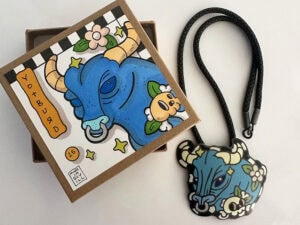Maria Cristina Bergesio passed away on March 30, 2020, in Figline Valdarno, Italy. She was a well-known art historian who specialized in contemporary jewelry and had worked as a curator since 1999. She liked her friends to address her by her nickname, MC.

She grew up in Florence, and within this permanent open-air exhibition fell in love with art. The magnificent Renaissance buildings and paradigms of fine art in the myriad private and public museums fostered her desire to become an art historian. In 1999, at the Faculty of Humanities and Philosophy at Florence University, she completed her BA (Hons) thesis on I Gioielli degli Artisti Italiani in Due Collezioni Private (1960–1980) (The Jewels of Italian Artists in Two Private Collections), supervised by Dr. Dora Liscia Bemporad, for whom she had great esteem and respect.
In 1999, at the age of 26, Maria Cristina entered the realm of exhibition curation. She was involved in this for three years, undertaking The Art of Jewelry and Artists Jewels in the 20th Century, at the Museo degli Argenti, in Florence, in 2001. Maria Cristina was particularly proud of this contribution to the promotion of jewelry.
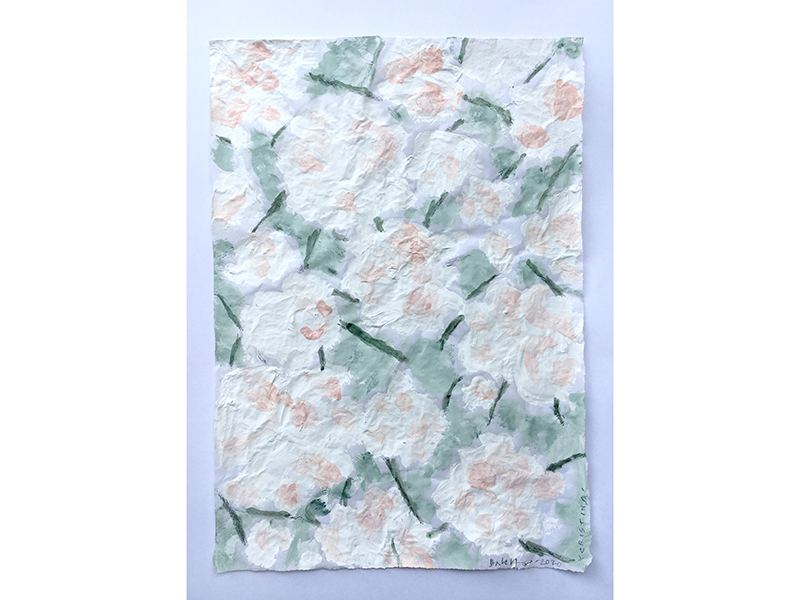
She did an exemplary job, considering the size of the organizational structure and her key involvement in different significant roles. She was one of the 18 authors who contributed essays, not to mention the task she took on of overall catalog preparation—indeed, a 475-page catalog published in both Italian and English! Maria Cristina’s authored contribution was an essay on the work of Mario Masenza, the Fumanti brothers, and GEM Montebello as interpreters of the artists’ jewel in Italy. This writing was the first clear sign of her talent as a historian and writer on “Gioielli d’Autore” (author’s jewels). It also defined her rigorous approach in researching the subject and constituted an important contribution to the study of the Italian artists’ jewel phenomenon from 1946 to 1978. Her text offers unique insights into Massimo Fumanti’s strategy and extrapolates thoughts gathered in the field, as she reports on direct conversations with him.[1]

In the same year as this exhibition, Maria Cristina obtained the Postgraduate Certificate in Education that allows university graduates to become secondary school teachers—in Italy, highly esteemed positions. Maria Cristina continued her studies with an MA in History of Art (Contemporary Art route) in 2002, with the thesis Nuove Tendenze del Gioiello d’Arte in Italia: l’Esperienza della Galleria Alternatives di Roma (New Trends in Art Jewelry in Italy: The Experience of Alternatives Gallery in Rome). Her passion for teaching the history of modern and contemporary jewelry was fulfilled by her fixed-term contract as adjunct lecturer at the Faculty of Architecture at the University of Florence (2002–2008), and as teacher in the history of contemporary jewelry at Le Arti Orafe (2005–2019).
The latter commissioned Maria Cristina to curate the Preziosa series of exhibitions, as curator and co-curator from 2005 to 2020. During these personal contributions, Maria Cristina gave voice to numerous nuances of art jewelry, or gioiello di ricerca (research jewelry), as she preferred to call it. In the course of curating this vast number of exhibitions, she developed her curatorial signature and actively contributed to the dissemination and debates surrounding jewelry as a form of artistic research to a local and international public.
The series of Preziosa exhibitions gave her the opportunity to explore her own role as a curator. Themes such as No Body Decoration (2006), Time Tales (2007–2008), Cutting the Mirror (2009), Dialogues (2010), and Un Certain Regard (2013) expressed her desire to explore and view different aspects of jewelry. Each exhibition was accompanied by a catalog, written and compiled by Maria Cristina.
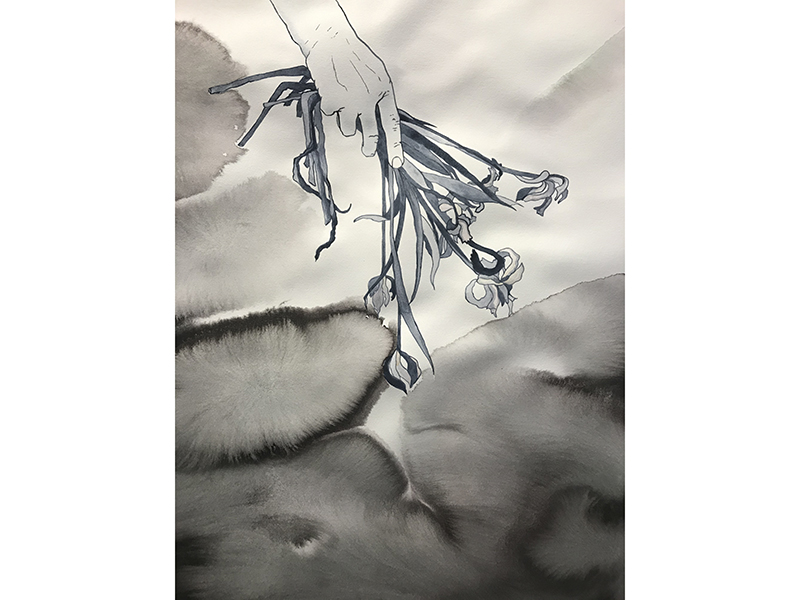
The selection of artists was diverse, as was the expression of her desire to elucidate all aspects of contemporary jewelry including the unexpected, surprising, and unruled. The 2010 exhibition Dialoghi (Dialogues) meant a new direction for Preziosa. Instead of the overall view of the curator, Maria Cristina now wanted to give the floor to the artists; as she explained in her introduction to the catalog, she saw the exhibition as a work in progress.[2] She invited three masters to choose a younger artist, and mediated a discussion among them. This way, Giampaolo Babetto chose Helen Britton, Johanna Dahm selected Andi Gut, and Ruudt Peters went with Evert Nijland. Maria Cristina described her own role as follows: “The curator occupied the position of prompter and mediator, seeking to weave a plot of questions, answers, proposals, statements, and reflections arising from the meetings with the various artists, with the objective of drafting a log of the paths explored.”[3] She saw the exhibition as a process, “a fluent event, a becoming.”[4] The artists who were part of this process speak about Maria Cristina with respect and gratitude as a woman who was very professional, supportive, and passionate, and who solved every problem during the complicated process. This time Maria Cristina, true to the subject of dialogue, managed to produce not only an exhibition and a catalog, but also a video on CD (as part of the catalog) to “encourage the spirit of dialogue.”[5]
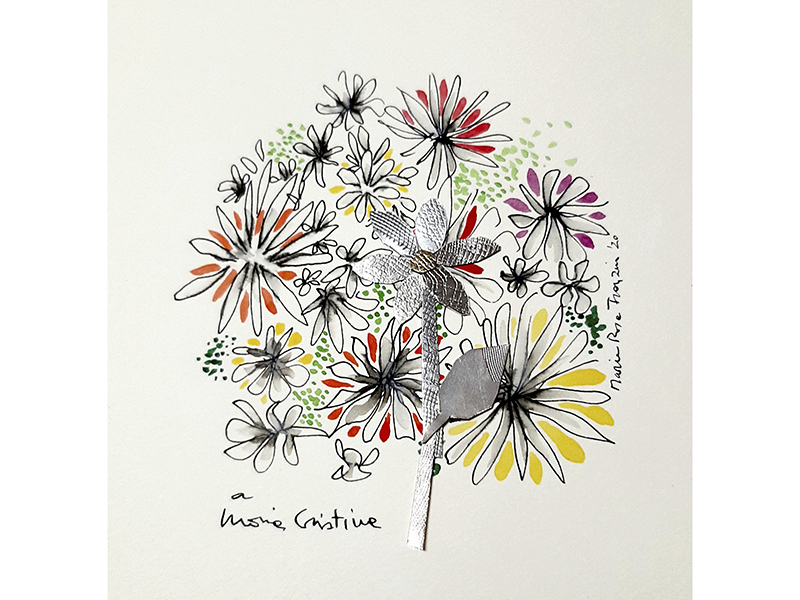
To her regret, the Preziosa exhibitions and catalogs never received the international attention they deserved, even though the scope of Preziosa was international. Sadly, forced by her passing, we are only now able to estimate her invaluable contribution to contemporary jewelry.
Before her unexpected passing away, Maria Cristina worked hard to finish two exhibitions slated for the 2020 Florence Jewellery Week, in May: Talking Jewellery, about two private jewelry collections, and an eponymous retrospective of the work of Carla Riccoboni.
In January 2018, Maria Cristina had proposed her theme on collecting contemporary jewelry for Talking Jewellery to Roberta Bernabei. From that point onward they developed the exhibition’s concept, based on an investigation of the collection of Pilar Garrigosa (Barcelona) and that of Paul Derrez and Willem Hoogstede (Amsterdam), by visiting them, interviewing them intensively, and making a selection. Talking Jewellery was conceived to be held in a private and intimate space that belonged to the English Victorian-era poets and playwright Robert Browning and Elizabeth Barrett Browning. The beautiful 15th-century patrician house, now Casa Guidi, is situated in front of Palazzo Pitti. This peculiar space, a little treasure, was chosen to assist the dialogue between the jewelry on display, the curators, and the audience—a small space, showing a small selection of pieces of jewelry, 20 in total. These pieces were to be accompanied by audio stories told by the collectors. Their private contexts could be shared and experienced by the audience in the quiet space of Casa Guidi, where the pieces of furniture and walls function as a reminiscence of the conversations that took place in this apartment long ago. Unfortunately, this exhibition and Carla Riccoboni’s became Maria Cristina’s last curatorial work, unvollendet (unfinished) and canceled, together with Florence Jewelry Week, because of the corona pandemic that hit Italy.
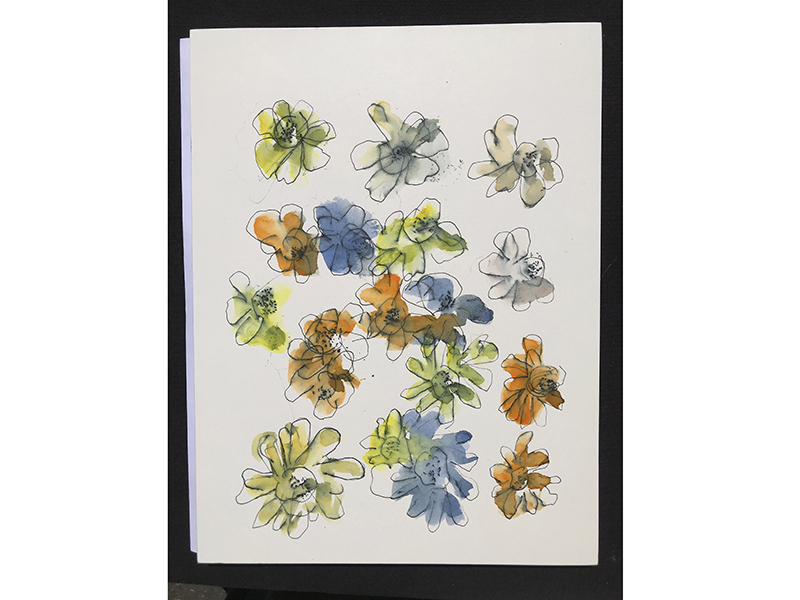
Maria Cristina’s work spans more than 20 years, ranging from curatorial work to writings, teaching, and symposia. Many are the essays, published in catalogs, that document her life’s achievements. Her writings were original, philosophic, and highly readable, much as she was herself: clear, inspiring, and beautiful. This quotation, from the introduction to Un Certain Regard, gives a perfect example: “Jewellery is not just an external sign, but rather an incorporated part of the action of society on the body of the individual,” tilting the perspective from the jewel to society—a brilliant observation.[6]
Art Jewelry Forum published her highly recommended article, Jewelry by Visual Artists in Italy: A Critical Review, which shows her way of thinking and her development in thinking about jewelry. In that 2012 article, Maria Cristina explained the special situation in Italy. In the late 1990s, when she became interested in the subject, jewelry was still considered as a lower category in the hierarchy of the arts. In Italy, considering jewelry as a creative medium for expression was like swearing in church. Only fine artists were considered to be able to do this. It was therefore important for Maria Cristina to introduce a new terminology that would create a clear distinction for the highly appreciated artists’ jewelry in Italy: research jewelry. In her own words: “The term that I use, ‘research jewelry,’ would tend to focus on the approach of jewelry as a testing and investigation ground and at the same time to step over the complicated labels of art or artist.”[7] Everyone who knew Maria Cristina will remember how she emphasized this term, gioielleria di ricerca, with a big smile on her face. Maria Cristina was a wonderful teacher, someone who could inspire and take others along.

Maria Cristina became an art history teacher at the Lyceum of Arts, IIS Alberti-Dante, in Florence, in 2014, a full-time job that gave her gratification and satisfaction. In six years of service, she gained the respect and esteem of her colleagues and students. She will be remembered as a brilliant art historian with a great passion for, and knowledge and understanding of, jewelry, and as a charismatic, kind, and warm person loved by everyone who knew her. One of her pupils at the lyceum wrote in a letter (published on the website of the school) that “she was more than a teacher; she was also: a mother, a friend, a shoulder to cry on, someone who would try to help […]”[8] She is greatly missed.
Maria Cristina Bergesio is survived by her parents, sister, and Enrico, her dear husband, to whom we address our sincere condolences.
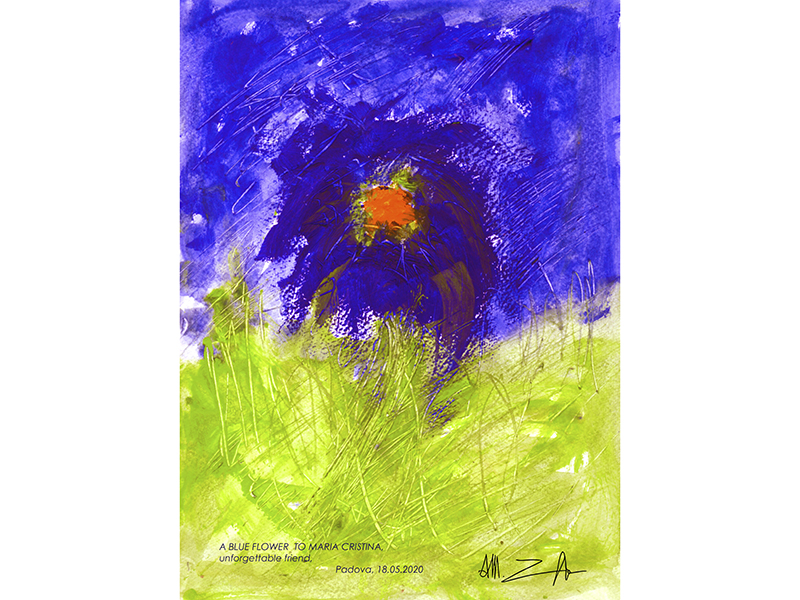
Maria Cristina loved flowers. The illustrations accompanying this text were created at the request of the authors to express their gratitude and love. This article is published as a joint undertaking by AJF and Klimt02.
[1] Maria Cristina Bergesio, “Masenza, Fumanti, Montebello: Interpreters of the Artists’ Jewelry in Italy,” in The Art of Jewelry and Artists’ Jewels in the 20th Century (Florence: Giunti, 2001), 302–347.
[2] Maria Cristina Bergesio, Firenze Preziosa 2010 Dialoghi (Firenze, 2010), 13.
[3] Ibid.
[4] Ibid., 15.
[5] Ibid.
[6] Maria Cristina Bergesio, Preziosa 2013—Un Certain Regard, (Firenze 2013), 14.
[7] Maria Cristina Bergesio, Jewelry by Visual Artists in Italy: A Critical Review, Art Jewelry Forum, January 22, 2012, https://artjewelryforum.org/articles/jewelry-visual-artists-italy-critical-review.
[8] Lettera alla professoressa Maria Cristina Bergesio (letter to professor Maria Cristina Bergesio), published on http://www.iisalberti-dante.it/notizia/lettera-alla-professoressa-maria-cristina-bergesio.

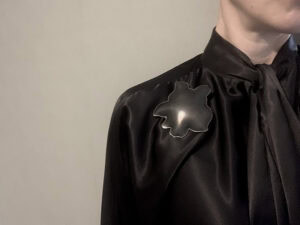
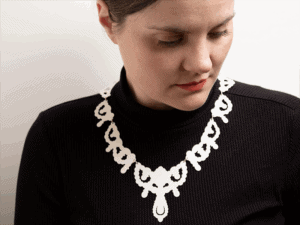
![“It is my strong opinion that we need to treasure [lives] once lived and make the most of what we harvest,” states Hellman. “I strive to give my refined material the voice to convey that and let my hands provide wordless jewelry with a language.” | Caption: Marianne Hellman, Can You Hear Me?, necklace in the fat-tanned interior of moose ears, silver, thread, photo: Hanna Klintskär](https://artjewelryforum.org/wp-content/uploads/2025/07/Can-you-hear-me-800x600-1-300x225.jpg)
